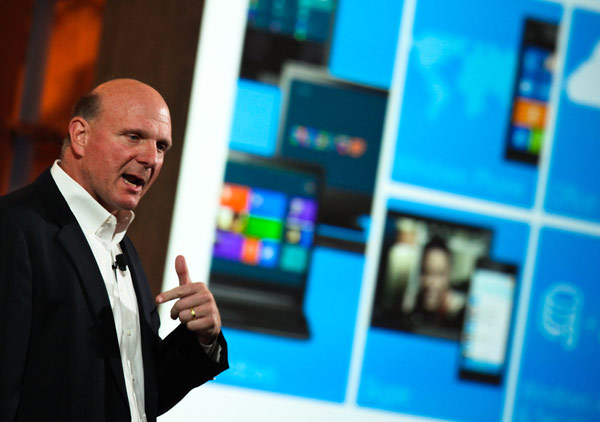
One of Steve Ballmer’s greatest attributes as Microsoft’s CEO has been his eternal optimism and enthusiasm — his ability to fire up the troops and make the case that the company has a bright future ahead. But that optimism has also been his biggest failing, particularly when assessing his own ability to lead the company toward a bright future.
This was illustrated by Ballmer’s response to ZDNet’s Mary Jo Foley this morning, when she asked if his decision to step down as CEO was sudden.
 “We worked hard on our strategy process, our org process,” he said. “And frankly I had no time to think about it during all of that…. I would say my thinking has intensified really over the last couple, two, two and a half months, something like that.”
“We worked hard on our strategy process, our org process,” he said. “And frankly I had no time to think about it during all of that…. I would say my thinking has intensified really over the last couple, two, two and a half months, something like that.”
That was a reference to the massive reorganization that Ballmer announced last month, and the response is illuminating as a glimpse into his psyche. Even in the midst of reimagining Microsoft’s future, he didn’t take the time to seriously contemplate his own long-term role as Microsoft’s leader. And that giant reorg left the company without a logical successor to the CEO’s office.
Not only that, but the reorg centralized the company’s reporting structure, shifting Microsoft’s strategic decision-making out of the company’s divisions and putting even more power in the hands of a central group of executives — which now faces an uncertain future as Ballmer prepares to leave within the next 12 months.
Based on his previous public remarks, Ballmer had been expected to stay around until 2017 or 2018, but he told employees in his memo this morning that his prior thinking would have put his retirement at a less-than-optimal moment for the company.
“There is never a perfect time for this type of transition, but now is the right time,” he wrote. “My original thoughts on timing would have had my retirement happen in the middle of our transformation to a devices and services company focused on empowering customers in the activities they value most. We need a CEO who will be here longer term for this new direction.”
Contrast this with Bill Gates’ departure from day-to-day duties at the company, which was announced two years in advance, with the Microsoft co-founder’s successors named on the same day he made the announcement. Ballmer’s announcement is abrupt by comparison, and it illustrates the lack of succession planning that has taken place inside the company
The company is now undertaking a search to find a new CEO, considering candidates both inside and outside the company. In many ways that’s a good thing, because it raises the possibility of an injection of new blood that can get the company back on course to face the challenges of the smartphone market, tablets and whatever next big thing is around the corner.
But it’s also a less-than-ideal way to make a transition, and Microsoft risks falling further behind its rivals in key markets as it transitions to a new leader over the next year.
In an interview with the Seattle Times, Ballmer says his biggest disappointment was Longhorn, the code name for the debacle that became Windows Vista. That may be the case, in a practical sense, but the real disappointment is that Ballmer didn’t recognize years ago that it was time for him to step aside.



